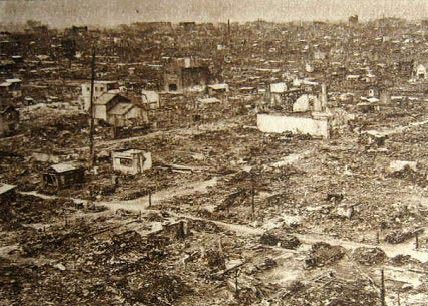The scale is of course more an idea than an object, an arbitrary measure of the Earth's tremblings based on surface measurements. It rises exponentially, so that a 7.3 quake is fifty times more powerful than a 6.3 earthquake and 2,500 times more powerful than a 5.3 earthquake.
當(dāng)然,里氏震級是一個概念,不是一件東西,是一個根據(jù)地面測量的結(jié)果武斷地得出的地球震動的次數(shù)。它以指數(shù)的上升來表示,于是7.3級地震要比6.3級地震強(qiáng)50次,比5.3級地震強(qiáng)2500次。
At least theoretically, there is no upper limit for an earthquake—nor, come to that, a lower limit. The scale is a simple measure of force, but says nothing about damage. A magnitude 7 quake happening deep in the mantle—say, four hundred miles down—might cause no surface damage at all, while a significantly smaller one happening just four miles under the surface could wreak widespread devastation. Much, too, depends on the nature of the subsoil, the quake's duration, the frequency and severity of aftershocks, and the physical setting of the affected area. All this means that the most fearsome quakes are not necessarily the most forceful, though force obviously counts for a lot.
從理論上講,地震沒有上限──因此也沒有下限。震級是一種測量強(qiáng)度的簡單方法,但毫不說明破壞程度。發(fā)生在地幔深處的7級地震──比如,650公里下面──可能對地面毫無破壞作用,而發(fā)生在地面以下六七公里處的小得多的地震,很可能造成大面積的破壞。很大程度上也取決于底土的性質(zhì)、地震持續(xù)的時間、余震的頻率和烈度,以及災(zāi)區(qū)的具體情況。這一切都意味著,最可怕的地震不一定是最強(qiáng)烈的地震,雖然強(qiáng)度顯然很有價(jià)值。

The largest earthquake since the scale's invention was (depending on which source you credit) either one centered on Prince William Sound in Alaska in March 1964, which measured 9.2 on the Richter scale, or one in the Pacific Ocean off the coast of Chile in 1960, which was initially logged at 8.6 magnitude but later revised upward by some authorities (including the United States Geological Survey) to a truly grand-scale 9.5.
自震級發(fā)明以來,最大的地震(取決于你使用哪種資料)不是1964年3月以阿拉斯加威廉王子灣為震中的大地震,就是1960年發(fā)生在智利近海太平洋里的大地震。前者是里氏9.2級;后者起先記錄為8.6級,但后來由某些權(quán)威(包括美國地質(zhì)局)往上調(diào)整為9.5級。












